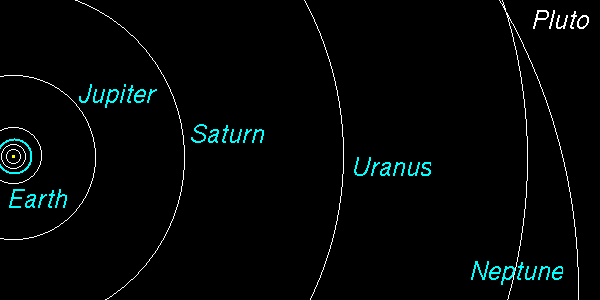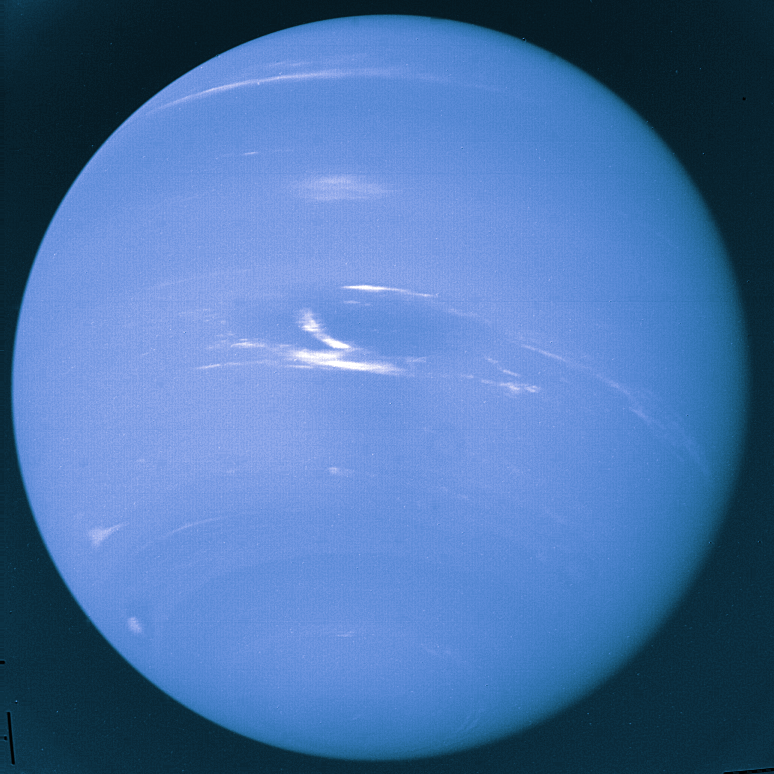Neptune

Neptune is the the planet that is almost the farthest from the sun. (Pluto is the farthest, but it is exceptional in its properties.) Neptune orbits the sun with
Neptune has eight moons, one of them is large: Triton.
Here is a picture of Neptune.

- Mass is 17 times the mass of the earth.
- Radius is 3.9 times the radius of the earth.
What is its density, compared to earth (approximately)?
We get a density somewhere between rock and ice.
The density suggests that Neptune was made of rock and ice, plus some gas at the top.
We also know a little more about how the mass is distributed, based on the
details of Neptune's gravitational field.
This suggests a model. (See note on molecules.)
- Cold on the outside, hot on the inside (perhaps 7000 K).
- Neptune is warmer at the surface than it would be if it were
just absorbing sunlight and reemitting it.
- One expects that the insides of planets got heated when the
planets formed and then have not cooled off yet.
- Decay of radioactive elements helps heat the centers of planets.
- A small rocky core (fluid).
- Then perhaps 80 % of the mass in H2O and some
N H3, broken into ions (fluid).
- Then a cool atmosphere, mostly H with some He.
- Also, N H3, which gives Neptune its pretty blue color.
ASTR 121 Home
Davison E. Soper, Institute of Theoretical Science,
University of Oregon, Eugene OR 97403 USA
soper@bovine.uoregon.edu


